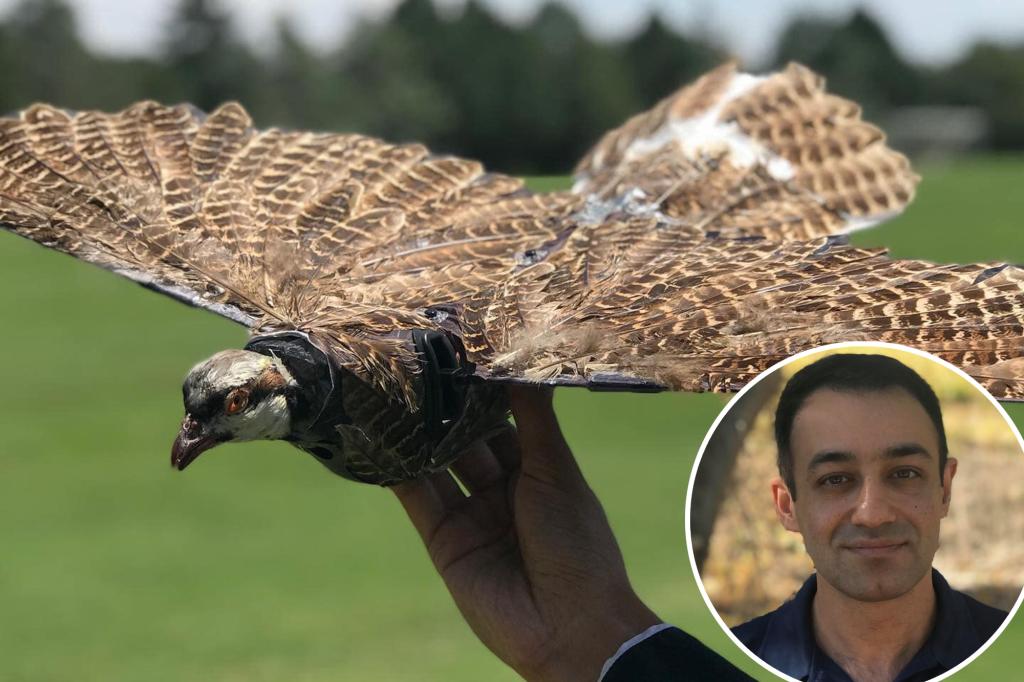That scenario may soon be possible, thanks to researchers at New Mexico Tech, who have taken an unconventional approach to wildlife monitoring.
Reuters traveled to Socorro, New Mexico to speak to Dr. Mostafa Hassanalian, a mechanical engineering professor leading a unique project, fitting taxidermy birds with drones.
Hassanalian completed two Master’s degrees in flapping wing drones, which he developed with artificial material.
When he realized that those models did not provide the highest efficiency compared to actual birds, Hassanalian decided to give dead birds new life by turning them into drones.
“Now we can use a re-engineered birds and dead birds and make them as a drone. And the only thing that we need to provide them to make them alive is to basically design an attrition mechanism, put in their body, and everything is there. So they have their tail, they have their wings, they have their head, the body, everything is there. So we do reverse engineering,” Hassanalian said.
The professor and his students calculate the weight, flapping frequency, and flapping angle the bird had while it was alive to create something similar.


Because they are not yet able to fly their taxidermy birds with a real flock, the engineering team runs its experiments inside a drone cage with fake mechanical birds.
This allows them to study the formation, flight, or flock of the birds of migratory birds.
These studies all circle back to the advancement of the aviation industry, Hassanalian explained.


“It’s basically if we learn how they, how these birds, they manage your energy between themselves, we can apply them into the future aviation industry to save more energy and save more fuel,” he said.
Brenden Herkenhoff, a Ph.D. student at New Mexico Tech, focuses his research on bio-inspiration, mainly looking at coloration and flight efficiency for various types of drones and other aircraft.
While other researchers think of a bird’s color as a way for attracting mates or camouflage, Herkenhoff is studying how color affects flight efficiency.
“We’ve done experiments and determined that for our fixed-wing aircraft, applying certain color can change the flight efficiency. And the same is true for birds, we believe,” he said.
The experiments by the Ph.D. student help Hassanalian improve the effectiveness of the taxidermy bird drone for a model with a longer flight endurance.
Despite the benefits of this technology, the use of drones has raised privacy concerns and Dr. Hassanalian is well aware of them.
Privacy advocates worry that drones could be used for military or law enforcement surveillance purposes.
“We cannot deny the application of this for other types of military types of application. But what we have in focus is mainly civil application and specifically to understand the wildlife or monitor the birds,” Hassanalian said while acknowledging the concerns.


Hassanalian says he and his team will continue to work on this project for the next two years.
The next stage is to figure out how to make the taxidermy bird drone fly longer, as the current prototype only flies for 10 to 20 minutes.
𝗖𝗿𝗲𝗱𝗶𝘁𝘀, 𝗖𝗼𝗽𝘆𝗿𝗶𝗴𝗵𝘁 & 𝗖𝗼𝘂𝗿𝘁𝗲𝘀𝘆: nypost.com
𝗙𝗼𝗿 𝗮𝗻𝘆 𝗰𝗼𝗺𝗽𝗹𝗮𝗶𝗻𝘁𝘀 𝗿𝗲𝗴𝗮𝗿𝗱𝗶𝗻𝗴 𝗗𝗠𝗖𝗔,
𝗣𝗹𝗲𝗮𝘀𝗲 𝘀𝗲𝗻𝗱 𝘂𝘀 𝗮𝗻 𝗲𝗺𝗮𝗶𝗹 𝗮𝘁 dmca@enspirers.com


